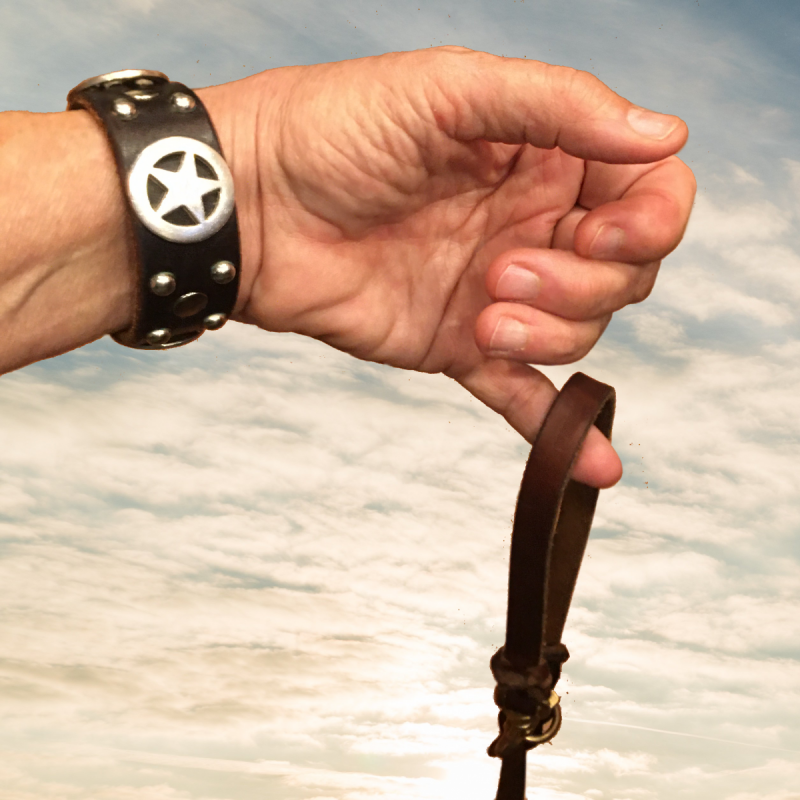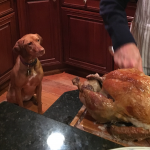Love a Gentle Leash
In this Valentine’s season let’s bring some love to that challenging activity, the leash walk!
Often experienced as a tug-of-war or a shoulder-dislocating pulling sport, walking nicely together on leash is one of the most elusive of human-canine skills.
There are a number of reasons that our dogs pull on leash:
-
- We are slower than our dogs
Our dogs have places that they want to go, things they want to see, blades of grass to sniff, and we bipedal humans are just too SLOW. - We have a history of letting our dogs get places by pulling on lead
We’ve inadvertently let our dogs pull us to those things to see and blades of grass to sniff, so our dogs come to think that this is the rule for moving forward. Pulling on the leash has gotten them where they wanted to go in the past, so if it doesn’t seem to be working now, then pulling harder must be the solution.
- We are slower than our dogs
…and my personal favorite reason…
-
- Our dogs pull because WE pull!
Fido pulls forward, and we, not wanting him to pull, pull back on the leash. He pulls harder, and we answer by pulling harder ourselves.
or
We see something we don’t want Fluffy to approach, so we pull back on the leash. Fluffy pulls forward, we pull back harder, and Fluffy….Well, you see where this is going! There’s a lot of bandwidth given over to debating whether this oppositional response is a reflex or just a responsive behavior, but the important takeaway is that pulling our dogs around on a tight leash, or letting them do the same with us, won’t teach polite leash walking!
- Our dogs pull because WE pull!
Our Valentine’s gift to you is a gentle game that we use to teach dogs that the leash can be a meaningful signal, rather than a tether, restraint, or punisher. Based on Shirley Chong’s brilliant Silky Leash approach, our “Gentle Leash” uses the tiniest of pressures on the leash as a cue to our dogs to reorient.
The keys to teaching this approach are gentleness, patience, and raising the bar in the tiniest of increments.
THE GENTLE LEASH GAME
Your dog should be wearing a flat collar, a martingale collar, or a back-clip harness. If you use a head halter this approach can also be a great help, and your gentleness and patience are even more important if that’s possible!
Introduce the Concept:
- Begin in a low-distraction environment.
- Clip the leash to your dog’s collar, harness, or head halter.
- Hold the leash with your pinky finger, about 8-12 inches away from the clip.
Step #1
- Using your pinky finger, place a tiny bit of pressure on the leash to the right side.
- When your dog moves his head the tiniest bit in the direction of the pressure, click or say “yes”, release the pressure on the leash, and feed a treat.
- Repeat five times.
Step #2
- Using your pinky finger, place a tiny bit of pressure on the leash to the left side.
- When your dog moves his head the tiniest bit in the direction of the pressure, click or say “yes”, release the pressure on the leash, and feed a treat.
- Repeat five times.
Step #3
- Using your pinky finger, place a tiny bit of pressure on the leash to the left or right side, mixing up the direction of pressure (left or right) randomly.
- When your dog moves his head the tiniest bit in the direction of the pressure, click or say “yes”, release the pressure on the leash, and feed a treat.
- Repeat seven times.
Avoid Trouble:
- Keep your training sessions short—a few minutes each.
- Have play breaks between sets. A game of tug, or time with a food puzzle, will go a long way to keeping up your dog’s enthusiasm.
- Keep your pressure on the leash VERY light—pinky finger only! We’re teaching our dogs a signal, so that they choose to move. We’re not forcing them to move.
Raise the Bar:
We want to increase the difficulty level ever so gradually, so that we never trigger the oppositional response. With this in mind, repeat steps #1 through #3 with these incremental variations:
Variation A, Distance:
In this variation you slowly increase the amount of movement that your dog offers in response to the leash signal.
- Wait for your dog to move his head a little bit further before you click:
- 1 inch
- 2 inches
- 3 inches
- etc.
- Wait for your dog to move his body a little bit:
- A shift of weight
- A tiny step
- A larger step or a couple of tiny steps
- etc.
Variation B, Duration:
In this variation you increase the amount of time that your dog comfortably moves in response to the leash signal.
- Wait for your dog to move for a full second before clicking.
- Wait for your dog to move for two full seconds before clicking.
- Wait for your dog to move for three full seconds before clicking.
- etc.
Variation C, Difficulty:
In this variation you raise the distraction level in the environment, starting with tiny increases. Here are some examples.
- Practice in a larger room or space.
- Practice just inside your back door. If the door is not see-through, open the door so that your dog can see outside, but work at a sufficient distance from the back door that he can respond thoughtfully to your leash signals.
- Have a family member walk by at a distance as you continue training.
- Practice just outside your back door.
- Have a family member walk by at a distance while carrying a toy.
- etc.
Final Thoughts:
- Use great treats to motivate your dog.
- If your dog is struggling, go back a few steps and raise the bar more slowly.
- It bears repeating: keep your sessions to a few minutes each.
Joyful Dog has written a number of blogs on cooperative leash walking, and we’d love for you to read them for more information.
https://joyfuldogllc.com/love-the-leash/
Specific steps to teach and troubleshoot the polite leash walk.
https://joyfuldogllc.com/emergency-leash-techniques/
What to do when you find yourself stuck behind your dog, just like the waterskier behind the powerboat.
https://joyfuldogllc.com/can-you-be-with-me/
Written to promote a years-ago workshop, this blog includes some TTouch tips for walking.
https://joyfuldogllc.com/cobblers-cookies-choices-connections/
Reflections on a walk as a companionable moment.




